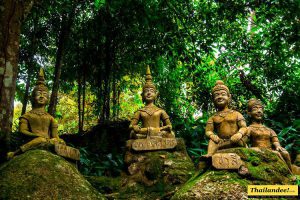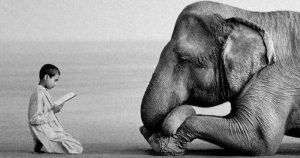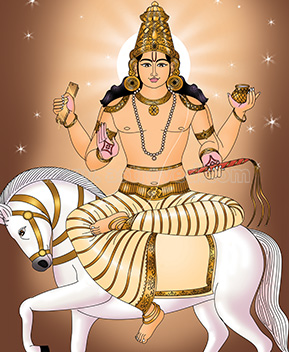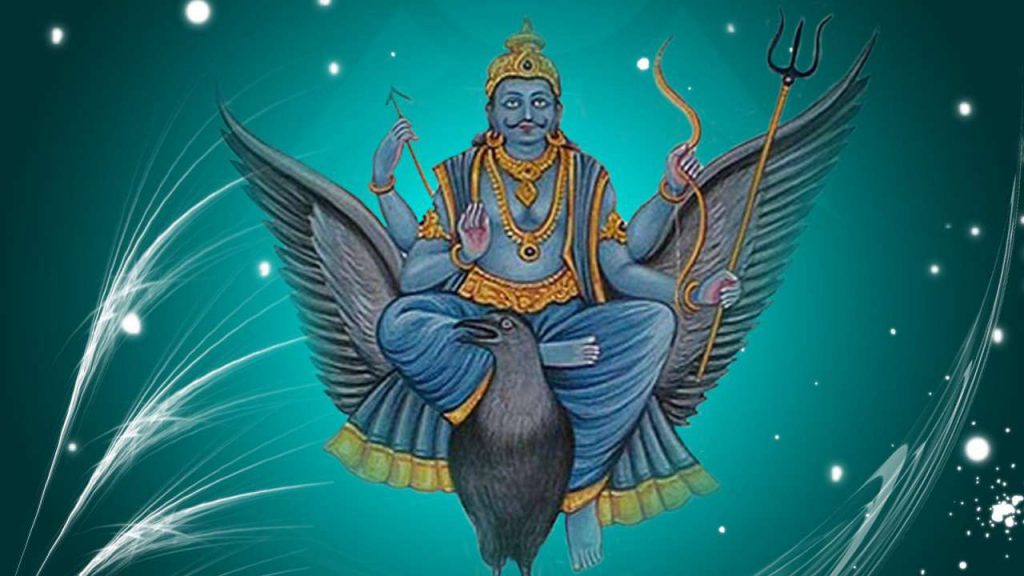Buddhism: A Path To Enlightenment

Buddhism is a path of practice and spiritual development leading to Insight into the true nature of reality. Buddhist practices like meditation are means of changing yourself in order to develop the qualities of awareness, kindness, and wisdom. The experience developed within the Buddhist tradition over thousands of years has created an incomparable resource for all those who wish to follow a path — a path which ultimately culminates in Enlightenment or Buddhahood. An enlightened being sees the nature of reality absolutely clearly, just as it is, and lives fully and naturally in accordance with that vision. This is the goal of the Buddhist spiritual life, representing the end of suffering for anyone who attains it.
What is Buddhism?
The goal of Buddhism is a state of lasting, unconditional happiness known as enlightenment.
To bring us to this state, Buddhism points us to lasting values in this impermanent world, and gives us valuable information about how things really are. Through understanding the law of cause and effect, using practical tools like meditation to gain insight and develop compassion and wisdom, we — all of us — can tap into our potential to realize the ultimate goal of enlightenment.
“From a Buddhist perspective happiness and joy do not depend on outer conditions, which change constantly, but on the experiencer of all phenomena — mind itself.”
Lama Ole Nydahl, Buddha and Love.
Lasting values in an impermanent world
 If we really pay attention, we can see that everything in the outside world is changing. Quickly like a candle flame or slowly like a mountain, even the most “solid” things change. They have no truly permanent essence.
If we really pay attention, we can see that everything in the outside world is changing. Quickly like a candle flame or slowly like a mountain, even the most “solid” things change. They have no truly permanent essence.
Our inner world of thoughts and feelings is in the same state of constant change. The more we realize how everything is impermanent and dependent on many conditions, the healthier a perspective we can keep on our lives, our relationships, possessions, and values — focusing on what truly matters.
If everything comes and goes, is there anything that stays? According to Buddhism, the only thing that is always present is the awareness in which all these experiences and phenomena appear. This awareness is not only timeless but also inherently joyful.
To recognize this timeless awareness here and now means to become enlightened, and it is the ultimate goal of Buddhism.
Karma: What goes around, comes around
Buddhism inspires us to take responsibility for our own lives, without moralizing, by understanding cause and effect (karma). Just like gravity, the law of karma functions, everywhere and all the time.
Buddha explained in great detail how we shape our future through our thoughts, words and actions. What we do now accumulates good or bad impressions in our mind. Knowing this gives us great freedom and puts us back in control of our lives. Karma is not fate. We can choose not to do harmful actions, and thus avoid creating the causes of future suffering. To sow the the seeds for good results, we engage in positive actions.
Through Buddhist meditation, we can also remove the negative impressions already accumulated in our mind from former actions. Once we see how much suffering comes from simply not understanding cause and effect, we naturally develop compassion for others.
Compassion and wisdom
 In Buddhism, compassion and wisdom go together. Practicing meditation regularly, we get more space in our mind, and distance from difficult thoughts and feelings. This allows us to see that everyone has the same basic problems as us, and we strengthen our compassionate wish to try to do something to help others.
In Buddhism, compassion and wisdom go together. Practicing meditation regularly, we get more space in our mind, and distance from difficult thoughts and feelings. This allows us to see that everyone has the same basic problems as us, and we strengthen our compassionate wish to try to do something to help others.
When we act from compassion, focusing on others rather than ourselves, we get better feedback from the world. The disturbing emotions that we all have, like anger, pride, attachment, and jealousy, loosen their grip. Where there is space that we don’t instantly fill with our own concerns any more, wisdom has a chance to appear spontaneously.
Thus, wisdom and compassion grow and support each other on the path.
Enlightenment
The Buddha was special because he was the first person to attain full enlightenment in recorded history. But there is no essential difference between the Buddha and us. We all have a mind, and we can all attain liberation and enlightenment by working with our minds.
Our body, thoughts, and feelings are constantly changing. Buddhism views them as “empty” — empty of any lasting essence, meaning that they are no basis for a real, separate ego or self. The state of liberation comes when we not only understand this intellectually but experience it in a deep, lasting way. With no solid ego we stop taking things personally. We gain an enormous space for joyful development, without the need to react to every negative emotion that comes by.
Enlightenment is the ultimate goal in Buddhism. All positive qualities — especially joy, fearlessness, and compassion — are now fully perfected. Here, our awareness is all-encompassing, and not limited in any way. With no confusion or disturbance in our minds, we benefit others spontaneously and effortlessly.
If you’re interested in getting to know more about Buddhism, you can visit a Buddhist center near you, or continue reading about what it means to be a Buddhist.
Being a Buddhist
Buddhists generally describe themselves as happy people. But becoming Buddhist doesn’t magically change the world around us to fit our needs. So what is it that changes?
To be a Buddhist, we don’t need to wear any special clothing, change our eating habits, or give up material possessions or a social life. It’s as simple as changing our perception — not taking the obstacles that come our way so seriously, and seeing everything around us as interesting and full of potential. Simple to say but not always easy to do.
By understanding the teachings and using tools like meditation, as Buddhists we gradually alter our view of whatever is happening in life. It’s not about putting on rose-tinted glasses but rather removing veils that prevent us from seeing how things really are.
The Buddha’s teachings are a great treasury of helpful advice and each tradition emphasizes different aspects of Buddhism. When it comes to living the teachings, monks, nuns, and lay people have quite different lifestyles. What can we say here about Diamond Way Buddhists?
Diamond Way Buddhists are lay people, often with families and regular jobs, who incorporate Buddhist methods into their daily lives.
What makes you a Buddhist?
In order to be able to become Buddhist, we need to take responsibility for creating our own lives, with the confidence that cause and effect, or karma, really functions. Through our thoughts and judgments, we create habits and attitudes that either limit or free us. Through experience, we see that we create today the causes of our situations tomorrow.
If we want to take this responsibility and decide to use this chance to reach the state of a Buddha, what do we need?
We need values that we can trust. Mind is the only thing that doesn’t change. It wasn’t born and cannot die. It is always and everywhere like space. Enlightenment, or Buddhahood, is a fully developed state of mind and is the goal of Buddhism. As Buddhists, we make a connection with this state – we open up to it – and this we call taking refuge. We also take refuge in the teachings (Dharma) that bring us to the goal, in our friends on the way (Sangha), and in our teacher (Lama).
From the state of complete joy and accomplishment of enlightenment, we can do the most to benefit others. So Buddhists also strengthen their determination to pursue this goal, so that we can share it with others. And to use whatever strength and insight we get on the way for the benefit of all. This noble aspiration is known as the Bodhisattva Promise.
How do we become enlightened?
 Practicing meditation, we get used to being in a state with less disturbing emotions and more joy and clarity. Then we try to bring the perspective experienced in meditation into daily life. If a difficult situation comes up, can we see it from a bigger perspective with less drama? Can we see the potential even in that person who’s triggering our emotions today?
Practicing meditation, we get used to being in a state with less disturbing emotions and more joy and clarity. Then we try to bring the perspective experienced in meditation into daily life. If a difficult situation comes up, can we see it from a bigger perspective with less drama? Can we see the potential even in that person who’s triggering our emotions today?
It is really important to start the day by remembering compassion. It doesn’t have to take long, but just for a moment be aware of how many beings there are and really wish that everybody becomes free from suffering. It makes a big difference if you wish that whatever you do will benefit them somehow.
– Hannah Nydahl, interview in Buddhism Today
Our meditation practice is like a laboratory; we work on ourselves in a closed environment. Then we check our view and reactions in daily life — stuck in traffic, negotiating at work, or trying our best with our partners, co-workers, or children. The proof of spiritual development is being better able to handle real-life situations with grace, skill, and humor.
If this sounds reasonable and like something one can use, then it’s natural to ask where to begin.
Where to start?
The easiest way in the West is to find a Buddhist center near you, where you can get an introduction to Buddhism and learn meditation. There are usually books, magazines and recorded lectures available to check out. If you like the people and meditations in the Buddhist center, then it makes sense to visit a lecture by a Buddhist master like Lama Ole Nydahl or Karmapa when they teach in your city or country.
Buddha’s teachings
In his 45-year teaching career, the Buddha gave teachings to a wide variety of people. Those who came to him fell into three main groups — as people also do today. Buddha gave them different teachings, which can be classified into different types of Buddhism.
Theravada (The School of the Elders)
The Theravada provides teachings about cause and effect (karma), as well as pacifying meditations to create distance from difficult thoughts and feelings. Following these teachings – also described as the Small Way (Sanskrit: Hinayana) – the understanding arises that thoughts and feelings are not personal. This gives us the opportunity to act in a beneficial way and accumulate positive karma.
The teachings spread mainly through countries in South-East Asia, including Sri Lanka, Thailand, Cambodia, and Burma. Today, the School of the Elders (Sanskrit: Theravada), is the closest example of this type of Buddhism. Their goal is liberation from all disturbances.
Mahayana (Great Way)
 Mahayana teachings attract people whose primary motivation in life is to be useful to others, also known as the Bodhisattva Attitude. The teachings and meditations of the Great Way aim to gradually increase compassion and wisdom. Supporting development on this way is the wisdom that the world is like a dream. Therefore, it can be changed through our thoughts, words, and actions. These Buddhist teachings spread chiefly through northern Asia – into Japan, Vietnam, China, Tibet, and Korea. For this reason, the Great Way (Sanskrit: Mahayana) schools are also known as Northern Buddhist schools. Their goal is to become not just liberated, but fully enlightened for the benefit of all. The Mahayana includes the Theravada teachings.
Mahayana teachings attract people whose primary motivation in life is to be useful to others, also known as the Bodhisattva Attitude. The teachings and meditations of the Great Way aim to gradually increase compassion and wisdom. Supporting development on this way is the wisdom that the world is like a dream. Therefore, it can be changed through our thoughts, words, and actions. These Buddhist teachings spread chiefly through northern Asia – into Japan, Vietnam, China, Tibet, and Korea. For this reason, the Great Way (Sanskrit: Mahayana) schools are also known as Northern Buddhist schools. Their goal is to become not just liberated, but fully enlightened for the benefit of all. The Mahayana includes the Theravada teachings.
Vajrayana (Diamond Way)
Buddha’s teachings described as the Diamond Way (Sanskrit: Vajrayana) are about the mind itself. These direct teachings that Buddha gave are for those who have a special kind of confidence. They understand that they can only perceive perfection outside because they have the same innate perfection inside. In Vajrayana, the Buddha is not considered a person; rather he is a mirror to our own mind. The teachings point out mind’s perfect qualities directly. They are often known as Buddhist Tantra. When Buddhism was destroyed in its native land, these teachings survived mainly in Tibet. The Vajrayana also includes the Theravada and Mahayana teachings.
Other Relared Posts
Features
Copyright © 2018 SEAN-O-VISTA

Powered with 



